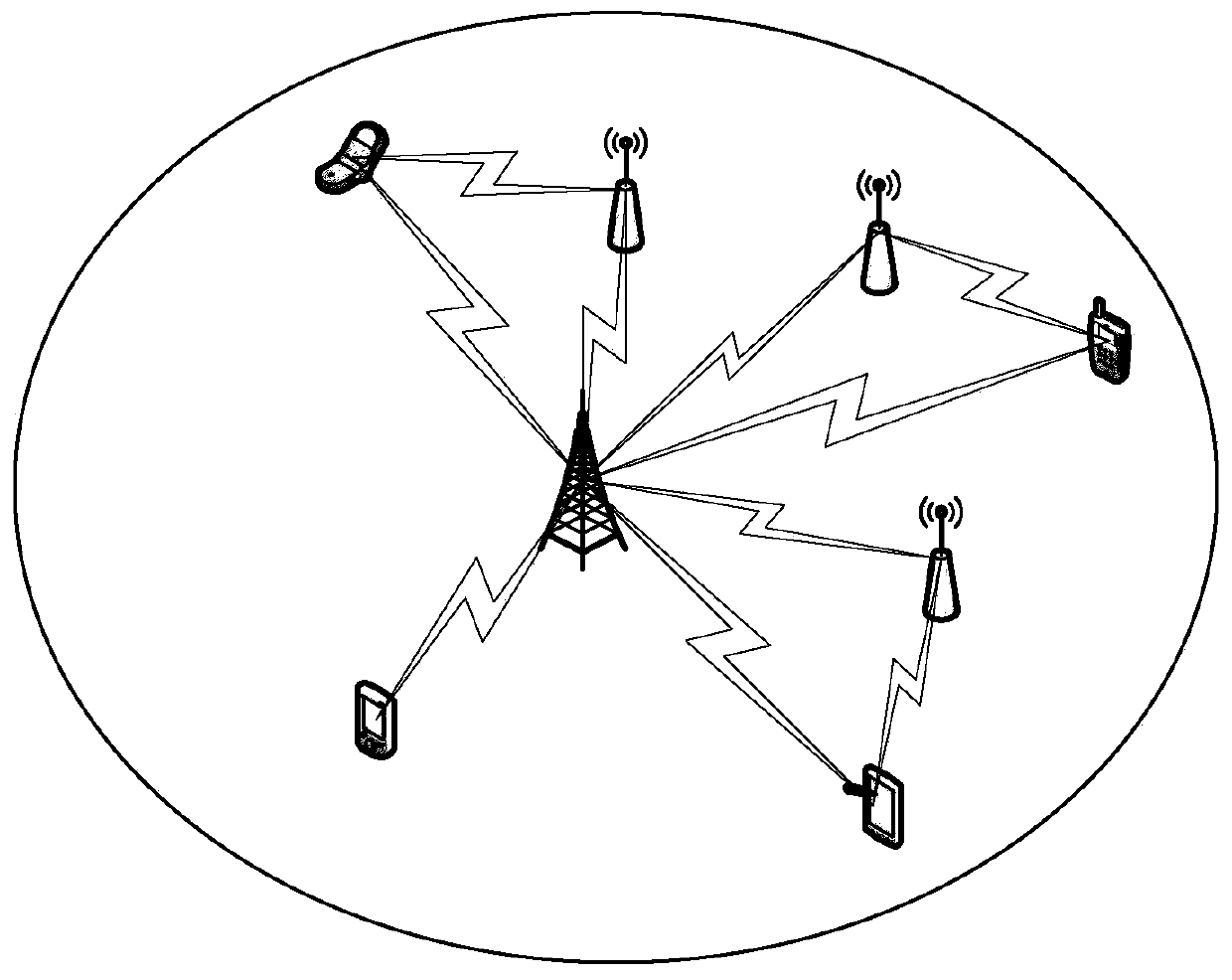A resource allocation method for multi-relay cooperative communication system based on fractional planning
A technology of cooperative communication and system resources, which is applied in the field of resource allocation of multi-relay cooperative communication systems based on fractional planning, and can solve the problems of not fully considering the performance improvement of the retransmission signal of the base station in the second time slot
- Summary
- Abstract
- Description
- Claims
- Application Information
AI Technical Summary
Problems solved by technology
Method used
Image
Examples
Embodiment 1
[0064] A resource allocation method for a multi-relay cooperative communication system based on fractional planning, including
[0065] Step 1: Build a system model;
[0066] The present invention is aimed at a special application scene, comes from practical application, and the scene setting is meticulous and reasonable, and has practical guiding significance. Such as figure 1 As shown, this aspect considers a two-hop multi-relay multi-user OFDM system. There is a source node S in the system 1 , N relay nodes, K user nodes, the transmission bandwidth is divided into M subcarriers, and each subcarrier shares the system bandwidth equally and experiences independent Rayleigh fading. All relay nodes apply the half-duplex DF relay mode, and can obtain instantaneous channel information under different subcarriers. The communication process of the system is divided into two time slots. In the first time slot, all relay nodes and user nodes receive 1 Broadcast the transmitted si...
Embodiment 2
[0100] In order to further improve and improve the computational efficiency of the algorithm, on the basis of the Lagrangian multiplier algorithm, we can use the subgradient method in the process of each loop iteration, and select the progressive step length to make the optimization more accurate . Specifically, the Lagrangian factor β in the Lagrangian form of the optimization problem P1 S , β R,m , β φ,n The iterative update method of the subgradient algorithm adopts the subgradient algorithm, which has lower complexity and is more efficient. The iterative update equation of the subgradient algorithm is
[0101]
[0102]
[0103] where β 0 (τ), β m,m (τ) represent the Lagrangian factors of the τth iteration respectively, δ 0 (τ), δ m,m (τ) respectively represent the corresponding iteration step size.
[0104] In order to make the iteration speed faster and the accuracy higher, we choose a progressively smaller iteration step size. The iteration step size can be...
Embodiment 3
[0107] In order to reduce the complexity of the algorithm for practical application, the present invention proposes a simplified embodiment, specifically:
[0108] The solution of the step 3 optimization problem includes simplifying the objective function;
[0109] The optimization objective function in P1 becomes a linear continuous function, it is advisable to relax the constraints first, that is, define the decision matrix to replace t={t i,j,n,k},in Redefine:
[0110]
[0111]
[0112]
[0113] Thus, the revised optimization problem P2 is obtained:
[0114] P2: max
[0115] s.t. C1:
[0116] C2:
[0117] C3:
[0118] C4:
[0119] C5:
[0120] in:
[0121] For the first item of the above formula, it is to obtain the minimum value between two polynomials, and the overall maximum value of the expression needs to be obtained. This is a max-min problem, only when the two numbers to be compared are equal, In order to obtain the maximum value, ...
PUM
 Login to View More
Login to View More Abstract
Description
Claims
Application Information
 Login to View More
Login to View More - R&D
- Intellectual Property
- Life Sciences
- Materials
- Tech Scout
- Unparalleled Data Quality
- Higher Quality Content
- 60% Fewer Hallucinations
Browse by: Latest US Patents, China's latest patents, Technical Efficacy Thesaurus, Application Domain, Technology Topic, Popular Technical Reports.
© 2025 PatSnap. All rights reserved.Legal|Privacy policy|Modern Slavery Act Transparency Statement|Sitemap|About US| Contact US: help@patsnap.com



